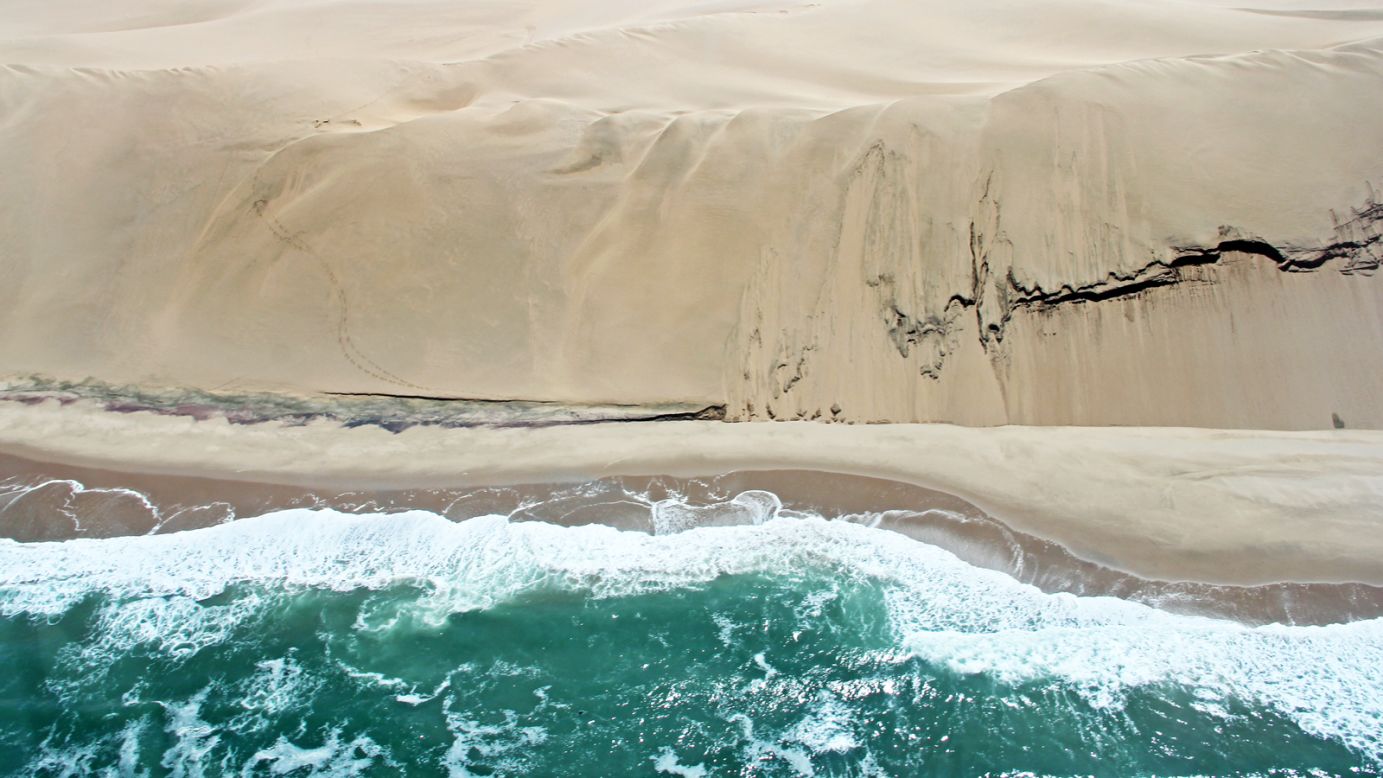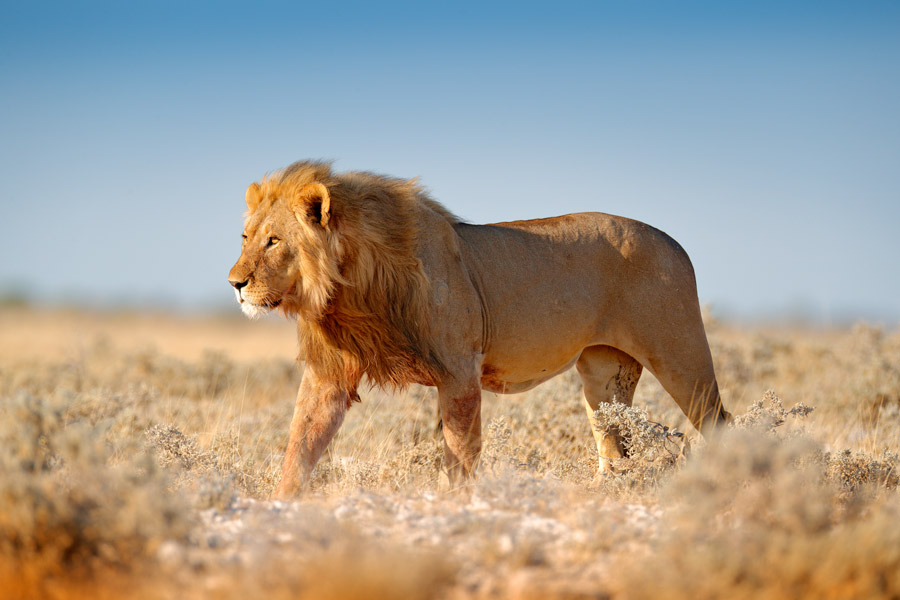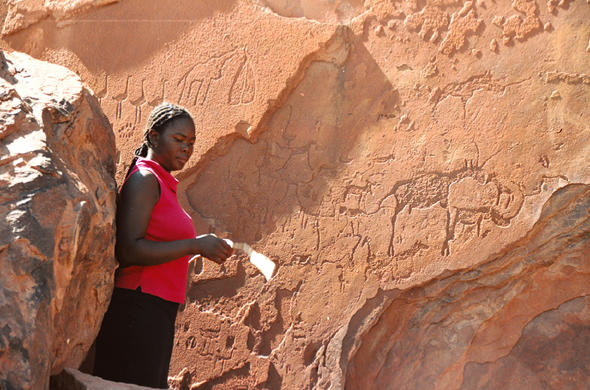Namibia in Focus: Unveiling the Most Photogenic Locations

Introduction
Welcome to the world of photography and the beauty of Namibia as a destination that offers incredible opportunities for photographers.
Namibia as a photography destination
Namibia, located in southwestern Africa, is a hidden gem for photography enthusiasts. With its diverse landscapes, rich wildlife, and unique cultural heritage, Namibia provides an enchanting setting for capturing breathtaking images. From the towering red sand dunes of the Namib Desert to the wildlife-rich plains of Etosha National Park, this country is a haven for photographers looking to capture nature's wonders.
Benefits of visiting Namibia for photography
There are several benefits to visiting Namibia for photography. Here are a few key ones:
- Diverse Landscapes: Namibia offers a wide range of landscapes, from deserts and mountains to coastlines and savannas. This diversity provides endless opportunities for photographers to capture unique and mesmerizing images.
- Rich Wildlife: Namibia is home to a diverse array of wildlife, including elephants, lions, rhinos, and cheetahs. Photographers can embark on thrilling safaris and capture these majestic creatures in their natural habitats.
- Astro-Photography: As one of the least light-polluted countries in the world, Namibia offers exceptional opportunities for astrophotography. The clear night skies provide a canvas for capturing stunning images of the Milky Way, constellations, and celestial events.
- Cultural Experiences: Namibia's indigenous communities, such as the Himba and San people, offer fascinating cultural experiences for photographers. Immersing yourself in their traditions and capturing their way of life can result in powerful and evocative images.
- Professional Support: Namibia has experienced local photographers and tour guides who can provide valuable insights and assistance to photographers. Their knowledge of the country and its hidden gems can enhance your photographic journey.
Namibia is a captivating destination for photographers seeking to capture the beauty of nature, wildlife, and culture. Its diverse landscapes, rich wildlife, and unique cultural experiences make it a must-visit destination for any photography enthusiast. Whether you are a professional or an amateur photographer, Namibia has something incredible to offer.

Sossusvlei
Sossusvlei's unique landscapes
Sossusvlei, located in the heart of the Namib Desert, is a photographer's paradise. The unique landscapes of Sossusvlei offer a mesmerizing and otherworldly experience. The towering red sand dunes, contrasting against the blue sky, create a stunning visual spectacle that is truly unforgettable. The play of light and shadows on the dunes throughout the day presents photographers with endless opportunities to capture breathtaking images.
Capturing the iconic dunes of Sossusvlei
The iconic dunes of Sossusvlei are some of the most photographed landscapes in the world. These massive sand dunes, shaped by the wind over thousands of years, create a surreal and captivating atmosphere. The early morning and late afternoon light casts beautiful warm hues on the dunes, making them a photographer's dream. Whether you choose to hike up the dunes or photograph them from afar, Sossusvlei offers a plethora of compositions and angles to capture these natural wonders.
Photographers visiting Sossusvlei can experiment with different techniques, such as long exposures to capture the flowing patterns of the sand or silhouettes to showcase the grandeur of the dunes against the sky. The vastness of the desert surrounding Sossusvlei also provides an opportunity to capture minimalist compositions, emphasizing the simplicity and beauty of the landscape.
With the changing light and shadows, Sossusvlei offers an ever-changing canvas for photographers. The sense of solitude and tranquillity in this remote location adds to the allure of capturing timeless images.
Sossusvlei is a must-visit destination for photographers seeking to capture the unique and enchanting landscapes of the Namib Desert. The iconic dunes, bathed in warm light, present endless possibilities for capturing awe-inspiring images. Whether you are a professional or an amateur photographer, Sossusvlei is sure to leave you with a portfolio of stunning photographs.

Skeleton Coast
Skeleton Coast's rugged beauty
The Skeleton Coast, located in the northwest of Namibia, is a place of rugged beauty and untamed wilderness. Its desolate landscapes and dramatic seascapes create a unique backdrop for photography enthusiasts. The name "Skeleton Coast" comes from the numerous shipwrecks scattered along its coastline, adding to its mysterious and haunting charm. The stark contrast between the sandy desert and the crashing waves of the Atlantic Ocean makes for captivating compositions.
Photographing shipwrecks and wildlife along the coast
Exploring the Skeleton Coast offers photographers the opportunity to capture stunning images of shipwrecks that have been battered by the elements and time. These weathered relics provide a fascinating subject, revealing the power of nature and the passage of time. The eerie atmosphere created by the shipwrecks amidst the vast wilderness adds a sense of adventure to any photograph.
In addition to the shipwrecks, wildlife photography enthusiasts will be delighted by the diverse array of animals that call the Skeleton Coast home. From seals and sea lions frolicking in the waves to desert-adapted elephants and rare bird species, capturing the unique wildlife in their natural habitat offers a thrilling challenge and the chance to create memorable images.
Photographers exploring the Skeleton Coast can experiment with different perspectives and compositions to capture the essence of this rugged and remote landscape. The ever-changing weather conditions, from foggy mornings to fiery sunsets, add depth and mood to photographs. The vast openness and pristine environment of the Skeleton Coast provides endless opportunities for capturing breathtaking and evocative images.
The Skeleton Coast is a paradise for photographers seeking to capture the wild and rugged beauty of Namibia's coastline. The shipwrecks, wildlife, and untouched landscapes offer a wealth of photographic opportunities. Whether you are a professional or an amateur photographer, the Skeleton Coast is sure to provide you with a unique and rewarding experience.

Etosha National Park
Etosha's abundant wildlife
Etosha National Park, located in northern Namibia, is a haven for wildlife enthusiasts and photographers alike. The park is home to a wide range of animal species, including elephants, lions, rhinos, giraffes, and zebras. With its vast open plains and the iconic Etosha Pan, photographers have the opportunity to capture stunning images of these majestic creatures in their natural habitat.
The Etosha Pan, a large salt pan that dominates the park, attracts a multitude of animals, especially during the dry season. As water sources become limited, animals gather around the pan, offering photographers incredible opportunities to capture intimate moments and interactions between different species. The contrast between the stark white pan and the diverse wildlife creates a captivating visual spectacle.
Tips for photographing animals in Etosha
-
Be patient: Wildlife photography requires patience. Spend time observing the animals' behaviour and movements to anticipate their actions and get the perfect shot.
-
Use a telephoto lens: Etosha's vast landscapes may require a telephoto lens to capture animals from a distance. A lens with a focal length of at least 200mm can help you capture detailed close-ups without disturbing the animals.
-
Consider the lighting: The golden hours of sunrise and sunset offer the best lighting conditions for photography. The soft golden light enhances the colours and textures of the animals and the landscape. Take advantage of these times of the day for your photography sessions.
-
Experiment with composition: Don't be afraid to try different angles and compositions to create unique and interesting images. Play with the elements in the frame, such as trees, rocks, or the vast plains, to add depth and context to your shots.
-
Respect the animals' space: Remember that you are a guest in their home. Keep a safe distance from the animals to avoid disrupting their natural behaviour. This not only ensures their well-being but also allows for more authentic and natural photographs.
Etosha National Park offers a truly immersive wildlife photography experience. With its abundant wildlife and breathtaking landscapes, photographers have the opportunity to capture unforgettable moments and create stunning images. Whether you are a seasoned professional or an amateur enthusiast, Etosha will not disappoint.

Kolmanskop
Kolmanskop's ghost town charm
Kolmanskop, located in southern Namibia, is a fascinating ghost town that offers photographers a unique and hauntingly beautiful subject for their images. This abandoned diamond mining town was once a bustling hub of activity in the early 20th century but was eventually abandoned and left to be reclaimed by the desert sands. Today, the crumbling buildings and sand-filled rooms create an eerie atmosphere that is perfect for capturing atmospheric and evocative photographs.
Walking through the streets of Kolmanskop, photographers can explore the decaying buildings and capture the juxtaposition of nature and man-made structures. The sand that slowly engulfs the buildings creates a sense of time standing still, while the remnants of furniture and personal belongings remind visitors of the vibrant past that once existed here. The textures, colours, and patterns found in this ghost town make for compelling photographic subjects, offering endless opportunities for creative compositions.
Exploring abandoned buildings through photography
When photographing Kolmanskop, there are a few tips to keep in mind to make the most of your time and capture captivating images:
- Pay attention to lighting: The soft, diffused lighting of the early morning or late afternoon adds a magical touch to the abandoned buildings. Take advantage of these times of the day to capture the textures and shadows in the most dramatic way.
- Focus on details: While the wide shots of the ghost town are impressive, don't forget to zoom in and capture the intricate details. From weathered paint peeling off walls to rusty doorknobs, these small details can reveal the history and character of the place.
- Experiment with perspectives: Play with different angles and viewpoints to create varied and interesting compositions. Stand in a broken window frame or crouch down low to capture unique perspectives that evoke a sense of exploration and discovery.
- Embrace the emptiness: The absence of people in Kolmanskop allows for a serene and contemplative atmosphere in your photographs. Use this emptiness to create a sense of mystery and solitude.
Visiting Kolmanskop is a truly unforgettable experience for photographers. The ghost town's unique charm and haunting aesthetics offer endless inspiration for capturing captivating images. Whether you're a professional or an amateur enthusiast, exploring and photographing Kolmanskop will surely leave a lasting impression on your creative soul.

Fish River Canyon
Fish River Canyon's dramatic vistas
When it comes to natural wonders, Fish River Canyon in Namibia is a must-visit for photographers. The canyon's dramatic vistas offer a breathtaking backdrop for capturing stunning images. With its steep cliffs, rugged terrain, and meandering river, Fish River Canyon promises to leave you in awe of its beauty.
As you explore Fish River Canyon, be prepared to be amazed by the sheer scale of this natural wonder. The canyon stretches for approximately 160 kilometres, making it the second-largest canyon in the world. This vastness provides endless opportunities for photography, with every turn offering a new perspective and composition.
Capturing the depth and scale of the second-largest canyon in the world
When photographing Fish River Canyon, here are some tips to help you capture the depth and scale of this magnificent natural wonder:
- Find the perfect vantage point: To truly showcase the grandeur of the canyon, find a high vantage point that allows you to capture the expansive views. Whether it's from the canyon rim or from a hiking trail, finding the right spot will make all the difference in capturing the vastness of the landscape.
- Use leading lines: To guide the viewer's eye through the image and create a sense of depth, incorporate leading lines into your composition. Whether it's the curve of the river or the lines created by the canyon walls, these elements will enhance the overall impact of your photographs.
- Embrace the golden hour: The soft, warm light of sunrise and sunset adds a magical touch to your images. Plan your visit to Fish River Canyon around these times of the day to capture the canyon in its most flattering light.
- Include a human element: To truly showcase the scale of the canyon, consider including a human element in your photographs. A person standing on the edge of the canyon or hiking along the trails can help convey the sheer size of the landscape.
As you explore and photograph Fish River Canyon, let its beauty inspire your creativity. Whether you're a professional photographer or an amateur enthusiast, the canyon's dramatic vistas will surely leave you with incredible images and memories.

Namib Desert
Namib Desert's surreal landscapes
When it comes to capturing surreal landscapes, the Namib Desert in Namibia is a photographer's paradise. With its vast expanses of towering sand dunes, barren plains, and rugged mountains, the Namib Desert offers a unique opportunity to capture otherworldly images. The contrasting colours, shifting sands, and mesmerizing light create a dramatic backdrop that will leave you in awe.
As you explore the Namib Desert, take your time to soak in the stunning landscapes and find the perfect compositions. The desert stretches for approximately 2,000 kilometres along the Atlantic coast of Namibia, providing endless opportunities for photographers to capture its beauty. Whether it's the iconic Sossusvlei dunes or the remote Skeleton Coast, every corner of the Namib Desert holds its own unique charm.
Photographing the desert's unique flora and fauna
The Namib Desert is not only home to spectacular landscapes but also a surprising array of unique flora and fauna. From the resilient Welwitschia plant to the elusive desert-adapted elephants, there are endless subjects to capture with your camera. Here are some tips to help you photograph the desert's unique flora and fauna:
- Get up close and personal: To capture the intricate details and textures of the desert's flora, get up close and personal with your subject. Use a macro lens or extension tubes to photograph the intricate patterns and unique characteristics of the plants.
- Be patient and observant: The Namib Desert is home to a variety of wildlife that has adapted to survive in harsh conditions. Take your time to observe and photograph these unique creatures in their natural habitat. Patience is key to capturing that perfect shot.
- Focus on textures and patterns: In the desert, textures and patterns abound. From the rippled dunes to the cracked desert floor, capturing these details can add depth and interest to your photographs. Experiment with different angles and compositions to highlight these unique features.
- Embrace the elements: The Namib Desert is known for its extreme conditions, including intense heat, strong winds, and ever-changing light. Embrace these elements and use them to your advantage in your photographs. The harsh lighting and dramatic shadows can create a stunning visual impact.
As you venture into the Namib Desert with your camera, let your imagination run wild. Capturing the surreal landscapes and unique flora and fauna will not only result in stunning images but also create lasting memories of this remarkable desert.

Twyfelfontein
Twyfelfontein's ancient rock art
When you visit Twyfelfontein in Namibia, you are transported back in time to witness the ancient rock art created by the indigenous people of this region. This UNESCO World Heritage site is home to one of the largest concentrations of rock engravings in Africa, dating back thousands of years. As a photographer, Twyfelfontein offers a unique opportunity to capture these historical artworks and preserve them for future generations.
As you explore Twyfelfontein, take your time to appreciate the intricate details and stories depicted in the rock engravings. The engravings showcase the daily lives, rituals, and wildlife of the indigenous communities who inhabited this area. From depictions of hunters and animals to symbols and shapes with deep cultural significance, each engraving has a story to tell.
Preserving history through photography
When photographing the rock art at Twyfelfontein, it is important to do so respectfully and responsibly. Follow these tips to ensure you preserve the history and integrity of the site:
- Seek permission: Before entering the site, make sure to obtain the necessary permits and follow any guidelines provided by the local authorities. This helps to protect the rock art and ensures it can be enjoyed by future generations.
- Use natural lighting: The best time to photograph the rock engravings is during the early morning or late afternoon when the soft golden light enhances the textures and details. Avoid using flash or artificial lighting as it can damage the delicate engravings.
- Frame it creatively: Experiment with different angles and compositions to showcase rock art in a unique and artistic way. Look for interesting patterns, lines, and textures in the surrounding rocks to frame your shots.
- Bring out the details: Use a macro lens or zoom in to capture the intricate details of each engraving. Highlight the textures, lines, and unique characteristics that make each artwork special.
By photographing the rock art at Twyfelfontein, you are helping to document and preserve this important historical site. Your photographs have the power to inspire others to appreciate and protect these cultural treasures. So grab your camera and immerse yourself in the rich history of Twyfelfontein.
